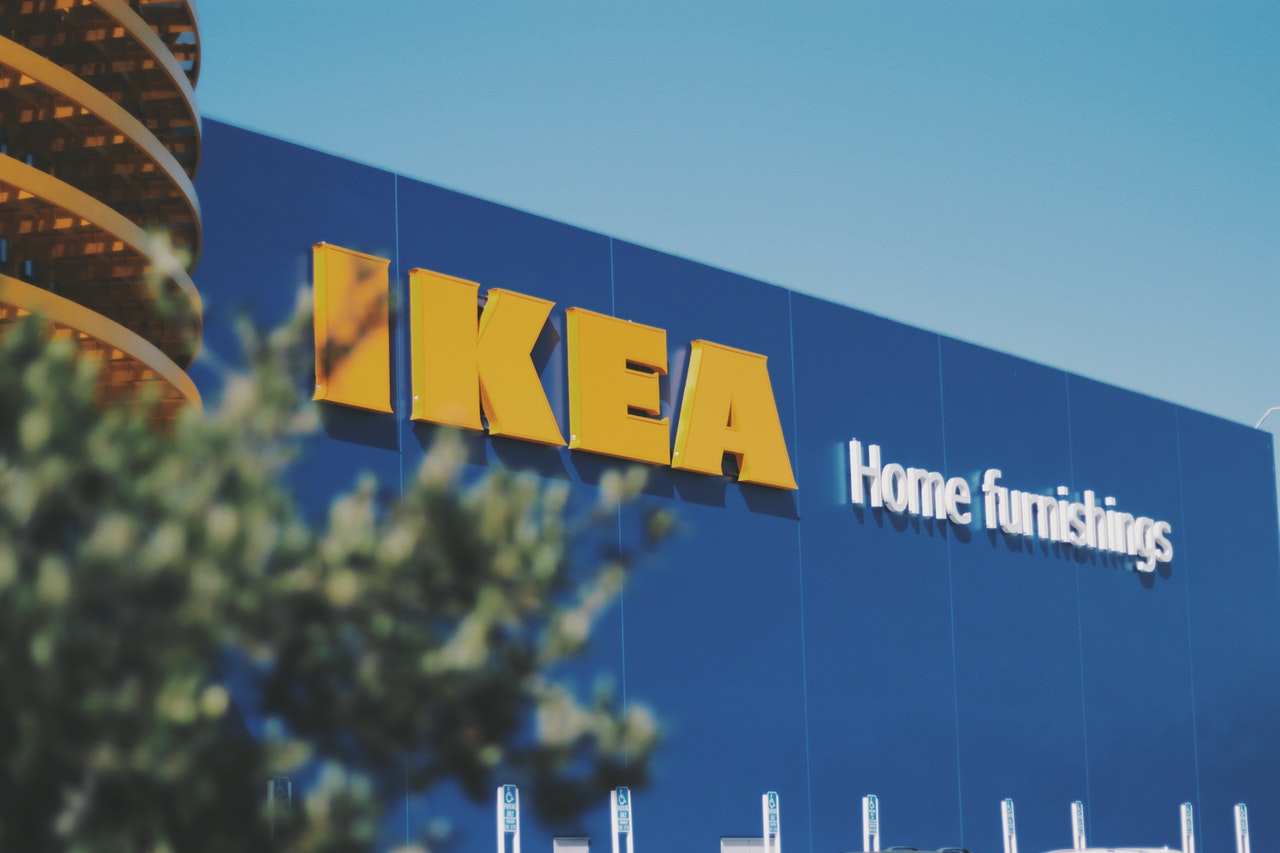Spotlight: IKEA Strategic ConsiderationsBuilding a strategy is like building furniture. Stick with me on that analogy… you have different pieces of your business, different objectives, and they need to be linked together to make each part stronger and your overall vision a reality. One company that most likely sees it’s strategic plans in that way is IKEA.
The company was originally founded in 1943 by Ingvar Kamprad in Sweden and expanded to the UK in 1987. The UK market itself is under great change due to the recent political decisions, so what strategic considerations should IKEA have? Let’s take a look…
PESTLE Analysis for IKEA in the UK
The impact of Brexit has already affected IKEA. Brexit caused prices to increase in 2017, but this did not end up hindering sales. However, the uncertainty of the pound to euro exchange rate could affect IKEA in the long run.
Climate change is a major issue that big corporations like IKEA need to evaluate. Their process of improving their sustainable image has begun by selling and using solar panels as well as beginning to eliminate one use plastic products. They are aiming to become a fully circular business by 2030 to eliminate waste and reuse resources.
The social cultural trend that could benefit IKEA in the future is the increase in online shopping. IKEA could use this to their advantage to push online sales to increase overall sales.
Political
- UK leaving EU
- Minimum wage in UK due to increase to £10.50 by 2024
- Will affect trading deals with EU, meaning higher barriers to entry.
- Harder for smaller companies that do not have the infrastructure.
- Effect will vary depending on company but retail is said to find increases harder to manage
- Have already been affected by import costs as prices raised by 3.6% in 2017, but sales still increased despite this.
- Uncertainty of the pound exchange rate will affect prices of products.
- Employees’ wages might increase – more costs for IKEA. Increase in customer income could persuade them to a premium brand.
Economic
- 1.7% inflation rate – Lowest rate since 2016
- GDP growth predicted to increase to 2% by 2022
- Will increase consumer spending on non-essential items.
- Could benefit or harm companies based on their target markets.
- Will increase sales, but inflation rates could be unpredictable with Brexit looming.
- If customer’s income increases them other premium companies could gain IKEA’s customers
Social
- UK online spend is forecast to increase 29.6% between 2019 and 2024
- Aging population in UK
- Companies would want to alter companies to keep up with trends.
- Will be more of an emphasis on targeting the older population.
- Emphasis on online sales and incorporate online promotional tactics into their strategy
- Should be taken into consideration for future target market – older demographic not the main target market
Technological
- £6.3billion total venture capital investment in UK technology in 2018
- “UK homeowners are starting to show greater interest in smart home technology and awareness is growing fast
- Will be necessary to invest to keep up with competition
- Force companies to match this trend to compete
- Possible threat but IKEA have already implemented augmented reality and virtual reality, putting pressure on competition. This technology merges the store experience with the visual experience.
- Already implemented smart lighting, blinds, speakers and charging devices, but will need to make sure its functions correctly and they stay ahead of competitors.
Environmental
- The UK is installing solar panels faster than any other European country
- Threat of climate change
- Possibility of companies changing to solar panels due to new customer expectations
- Could change how corporations are run. New laws could be implemented to improve corporation pollution
- Already implemented in stores and have now made it available to buy solar panels for customers to use at home
- Aiming to no longer produce one use plastic free products by 2020.
- Creating sustainable store in London run by solar panels
Read the Ultimate Guide to PESTLE Analysis.
Five Forces Analysis for IKEA in the UK
While IKEA have proven themselves by maintaining their strong sustainable competitive advantage, there are threats in the competitive environment that should be analysed. Due to the volume of competitors in the furniture industry, IKEA needs to make sure that they are innovating and maintaining their large market share.
There is a threat of substitutes for IKEA due to the innovation of new furniture outlets like Gumtree. Additionally, because there are lots of choice for furniture stores, the bargaining power of buyers poses a threat for IKEA.
Bargaining power of suppliers have a low impact because suppliers need IKEA more than IKEA needs them. To ensure that the right suppliers are chosen, IKEA uses the IWAY contract (IKEA.com, 2019c), which lists what the supplier is not allowed to do (i.e. child labour). New entrants also do not impact IKEA much because it is hard for start-ups to compete with a company as established as IKEA and in a competitive market.
Industry Rivalry: High
- Highly competitive growing market. High exit barriers.
- Competitors: DFS, Wayfair, B&Q, Wickes, John Lewis, Amazon, Argos
- IKEA should maintain its sustainable competitive advance by differentiating themselves by providing low cost, high quality products.
Threat from New Entry: Low
- High barriers to entry because of established market and high competition. Hard for newcomers due to economies of scale.
- New entrants competing with IKEA is hard and costly as IKEA are such a globally known company, thus making IKEA have a competitive advantage.
- High expertise and innovation in the sector which pushes IKEA to focus on innovating products (e.g. home technology, AR)
Threat from Substitutes: Medium
- Gumtree, charity shops, furniture markets.
- Not many alternatives that are low price, high quality and offer the same variety of products.
- Their brand image aids in preventing substitutes to be a major issue.
Threat from Suppliers: Low
- Furniture industry have the choice of their suppliers.
- Due the substantial amount of suppliers that IKEA are able to acquire means that the suppliers are in a more vulnerable position and do not hold much bargaining power.
- IWAY is the code of conduct that IKEA’s suppliers must follow to be one of their suppliers (if violated, they are removed) create strong relationships with suppliers (IKEA.com, 2019b)
Threat from Customers: Medium
- Customers have lots of choice in the furniture industry so important for companies to differentiate themselves.
- With the threat of a growing market, IKEA should not be too threatened by the competitive environment as they produce high quality and affordable products using a cohesive and thought-out strategy that will satisfy the target audience.
- Follow the customer trends of affordable pricing – IKEA customers are price sensitive.
Complete your own Five Forces here.
SWOT Analysis for IKEA in the UK
Strengths
- Low price, high quality and stylish products
- Strong global brand image
- Variety of products
- Extensive market research
- Economies of scale – large number of units for cheaper products
- High barriers to entry for start ups
- Has increased renewable resources
- IKEA customer experience – in the store
Weaknesses
- Lack of stores in the UK, which makes it harder for customers to get to stores
- Size of the company makes it hard to control standards and quality
- Reliant on suppliers to provide materials
Opportunities
- Demand for sustainability. Reducing carbon footprint
- New, smaller stores
- New technology – smart home technology (Schwartz, 2019)
- Adding premium furniture line – reach bigger demographic
- Celebrity endorsement
- Leasing furniture (Rogers, 2019) – implement in all of UK
Threats
- Effects of Brexit – possibility of increased prices
- Highly competitive industry
- If there is an increase in customer household income, then customers likely to buy from higher quality competitor need to keep prices low
- Alternatives to furniture stores leasing them or buying cheaply from charity shops
Read the Ultimate Guide to SWOT Analysis.
Strategic Objective: Digital Marketing
Digital marketing would be a key tool to help implement a market penetration strategy for IKEA. It would bring more brand awareness, which would inevitably increase the market share and increase online sales. This approach would also help to promote the sustainability of the company and would increase the brand image by showing customers that the company is environmentally responsible.
While IKEA has proven its dedication to digital marketing, they could emphasise this to further enhance their position in the market.
Digital Marketing Mix:
- Price: Promotions for buying products online, student discounts, family discount
- Product: Showcasing their smart home technology, continue using their augmented reality (AR) technology to showcase furniture
- Place: Use social media more to reach younger target market, improve online website for customers – make it easier to use and include all products that can be found in the stores
- Promotion: Increase advertisements that highlight the sustainability of IKEA to reach target market (using environmentalist celebrity), continue using guerrilla marketing to get customers involved more
5 I’s:
- Identification: Make customers at forefront of decisions, target students and families that care about the environment
- Individualism: Individual or family IKEA account which helps consumers to see products relating to products that have been previously bought or looked at
- Interaction: Guerrilla marketing in big city stores to interact with customers, social media to increase customer’s awareness of IKEA’s sustainability, virtual reality, augmented reality, getting customer feedback to stay ahead of trends, emphasise sustainably being done affordably
- Integration: Need to make sure that all marketing elements agree with the brand image of the company and have a cohesive message
- Integrity: IKEA should continue to show their down-to-earth values through their marketing (IKEA.com, 2019a), make sure that website is safe for customers to use and online service is positive
Overall, implementing digital marketing further will allow IKEA to achieve their company objectives of financial growth, brand positioning and customer acquisition.
In short, a lot for IKEA to consider! If you’ve enjoyed this article you might like to read our article on strategic considerations for the retail industry.
Need help building your own strategy?
Our strategy software makes it faster and easier to formulate a strategy, manage the execution and track the results. Book your personal demo and get a strategy plan template tailored to your organization.











